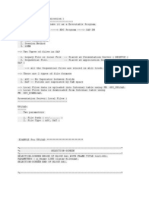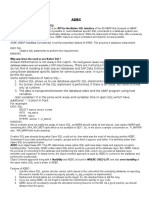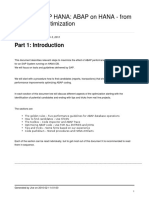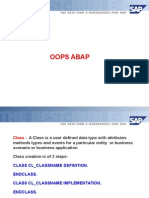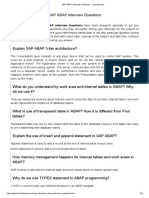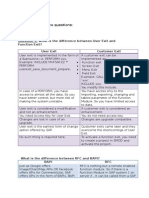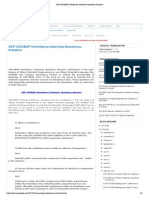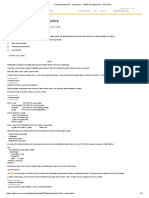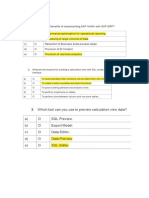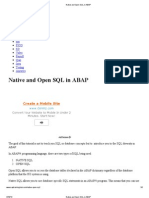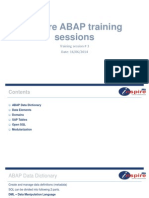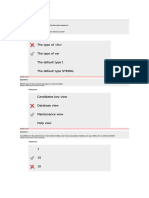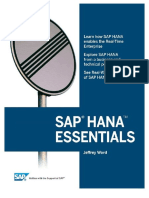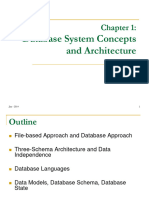0% found this document useful (0 votes)
882 views6 pagesOpen SQL and Native SQL in SAP ABAP PDF
There are two types of SQL used in ABAP programming: native SQL and open SQL. Native SQL allows database-specific SQL statements while open SQL provides a uniform syntax across databases. Open SQL can only access tables defined in the ABAP dictionary, while native SQL can access other tables as well. Both return codes to indicate success or failure, with native SQL additionally using host variables to transfer data between the database and ABAP program.
Uploaded by
Mythili DuraisamiCopyright
© © All Rights Reserved
We take content rights seriously. If you suspect this is your content, claim it here.
Available Formats
Download as PDF, TXT or read online on Scribd
0% found this document useful (0 votes)
882 views6 pagesOpen SQL and Native SQL in SAP ABAP PDF
There are two types of SQL used in ABAP programming: native SQL and open SQL. Native SQL allows database-specific SQL statements while open SQL provides a uniform syntax across databases. Open SQL can only access tables defined in the ABAP dictionary, while native SQL can access other tables as well. Both return codes to indicate success or failure, with native SQL additionally using host variables to transfer data between the database and ABAP program.
Uploaded by
Mythili DuraisamiCopyright
© © All Rights Reserved
We take content rights seriously. If you suspect this is your content, claim it here.
Available Formats
Download as PDF, TXT or read online on Scribd
/ 6






